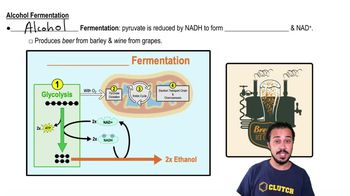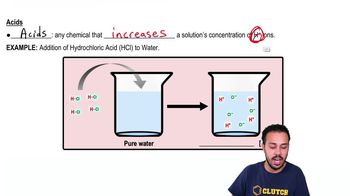Here are the essential concepts you must grasp in order to answer the question correctly.
Fermentation
Fermentation is a metabolic process that converts sugars into acids, gases, or alcohol using microorganisms, primarily yeasts and bacteria. In winemaking, the primary fermentation involves the conversion of sugars like glucose and sucrose into ethanol and carbon dioxide by yeast. Understanding fermentation is crucial for identifying desirable and undesirable reactions in the winemaking process.
Recommended video:
Acetic Acid Bacteria
Acetic acid bacteria (AAB) are a group of bacteria that convert ethanol into acetic acid, which is the primary component of vinegar. This reaction is undesirable in winemaking as it can spoil the wine, leading to a sour taste. Recognizing the role of AAB helps winemakers prevent spoilage and maintain the quality of the wine.
Recommended video:
Malolactic Fermentation
Malolactic fermentation is a process where malic acid in wine is converted to lactic acid by lactic acid bacteria. This reaction softens the wine's acidity and adds complexity to its flavor profile. While this process is often desirable in certain wines, understanding its context is essential to differentiate it from undesirable reactions like the production of acetic acid.
Recommended video:
 Verified step by step guidance
Verified step by step guidance


